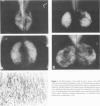Abstract
OBJECTIVE: The purpose of this study was to characterize the biologic determinants that affect the behavior and management of infiltrating lobular cancer. METHODS: A prospectively accrued data base containing 1548 breast cancer cases was queried for specific pathologic and mammographic features. From this data base, 777 patients treated and followed-up at the H. Lee Moffitt Cancer Center were reviewed, and comparisons were made between the following three histologic subgroups: 661 infiltrating ductal (ID), 42 infiltrating ductal plus infiltrating lobular (ID + IL), and 74 infiltrating lobular (IL). RESULTS: Comparisons of the three histologic forms of breast cancer demonstrated the following: 1. At diagnosis tumors with IL components were larger than those with ID components (p < 0.001); in addition, a greater percentage of IL cancers were T3 lesions (14.8%), compared with ID cancers (4.5%). 2. Sizes of IL tumors were underestimated frequently by mammographic examinations when compared with pathologic measurements (p < 0.001). 3. By comparison to ID tumors, increasing IL tumor size is less likely to be associated with an increased number of metastatic lymph nodes per patient (p = 0.09). 4. Infiltrating lobular cancers treated by lumpectomy with cytologic surgical margin analysis more often gave false-negative results than did ID cancers (p < 0.001). 5. Infiltrating lobular cancers treated by lumpectomy required conversion to mastectomy over 2 times more frequently than ID cancers treated by lumpectomy. 6. Mastectomy was performed more frequently than lumpectomy for the treatment of IL versus ID tumors (p = 0.039). CONCLUSIONS: Infiltrating lobular cancers are biologically distinct from ID cancers. Although lumpectomy may be performed safely in selected patients, multiple difficulties exist in the management of IL cancer, particularly when breast conservation is chosen.
Full text
PDF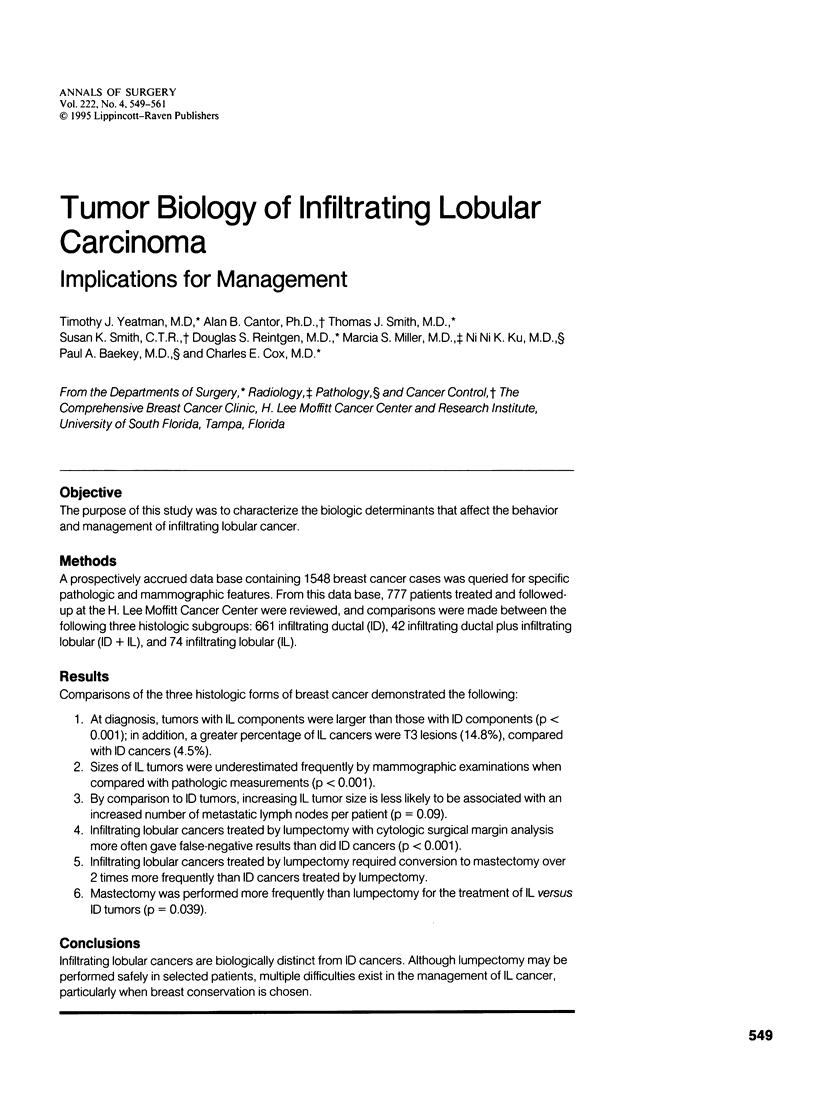
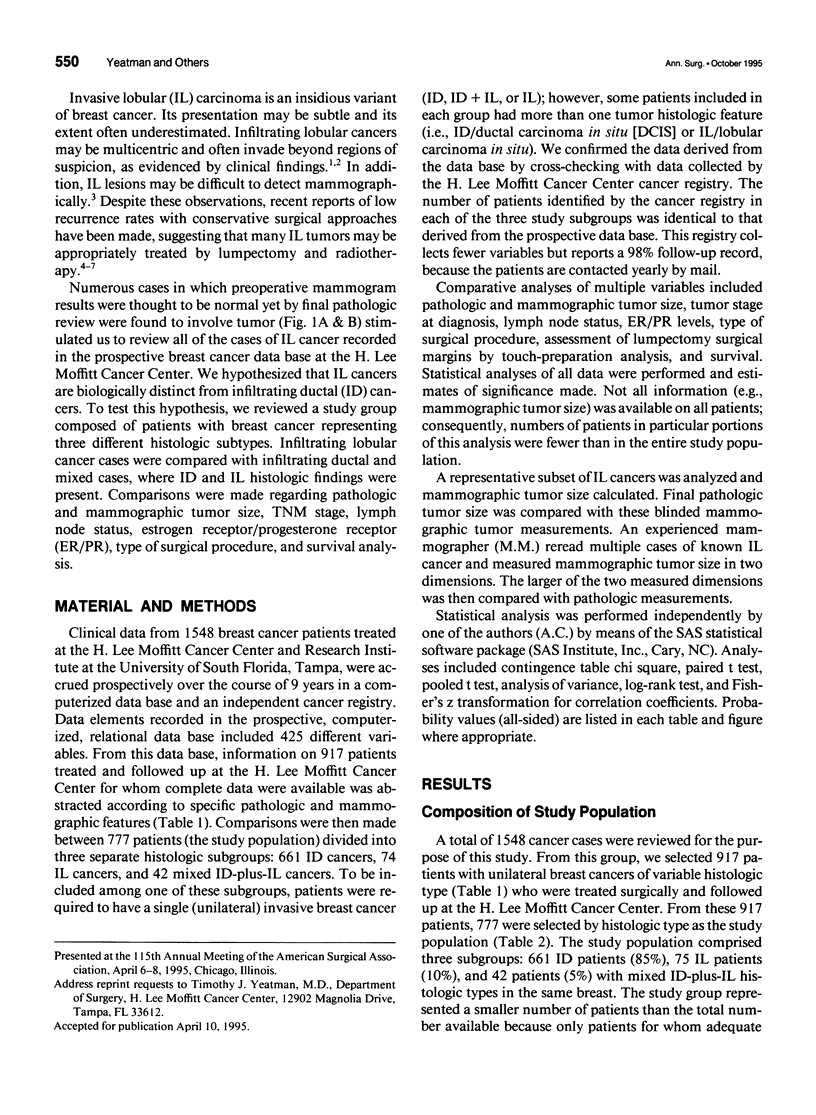
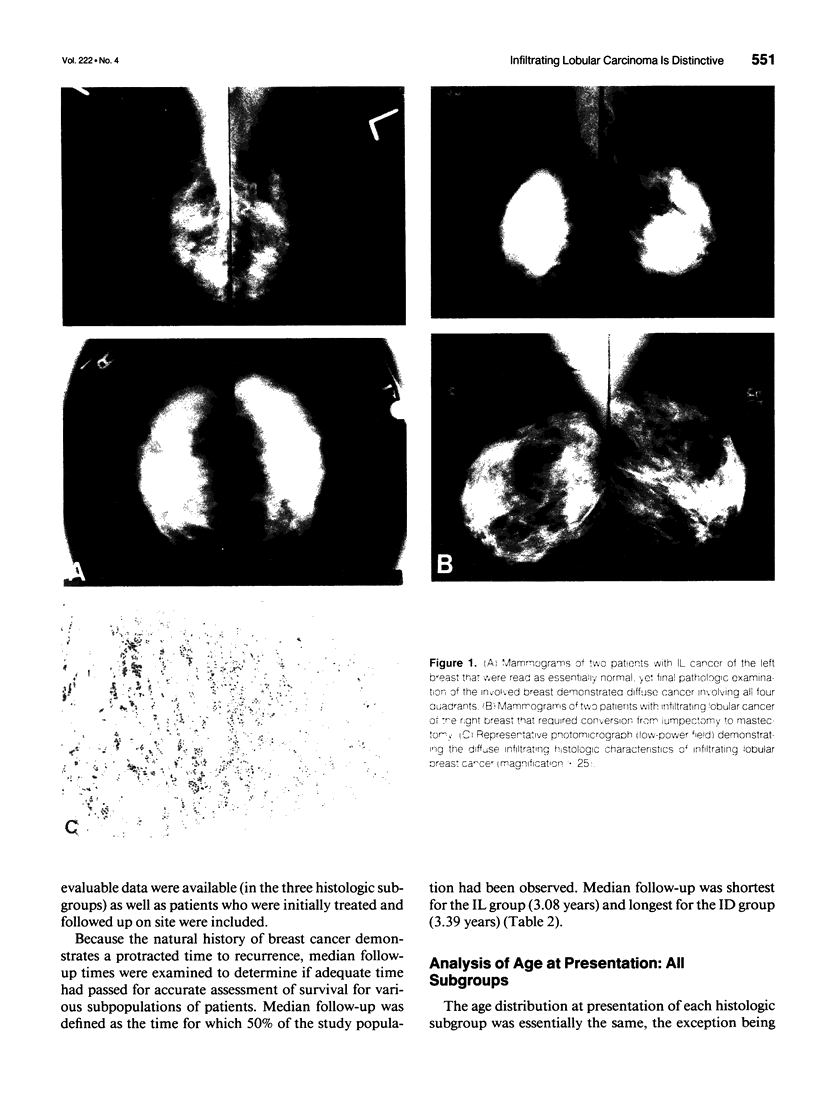
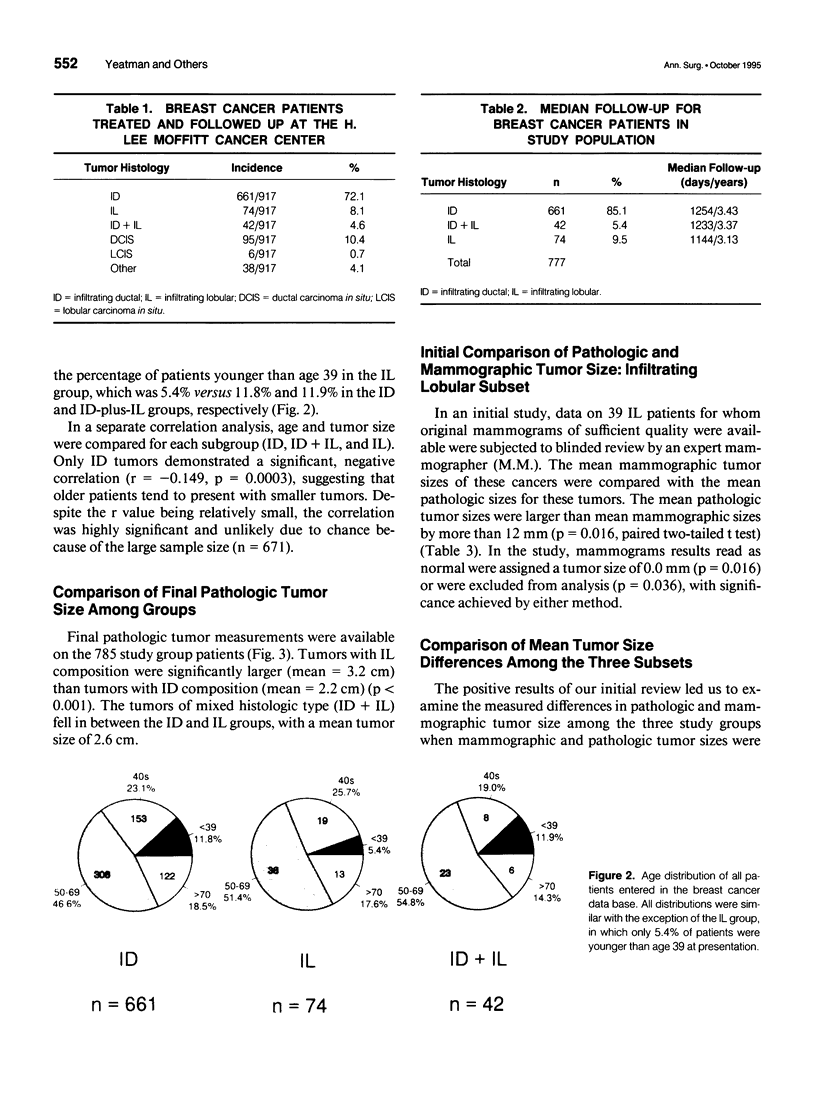
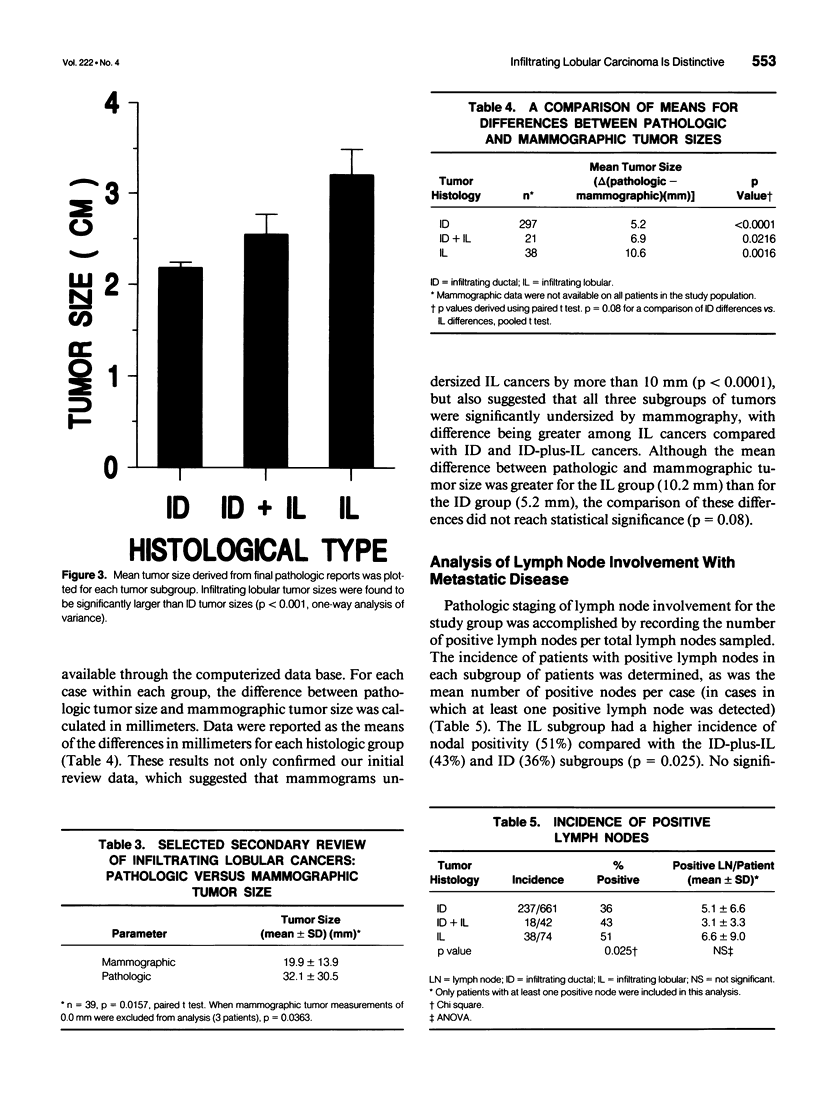
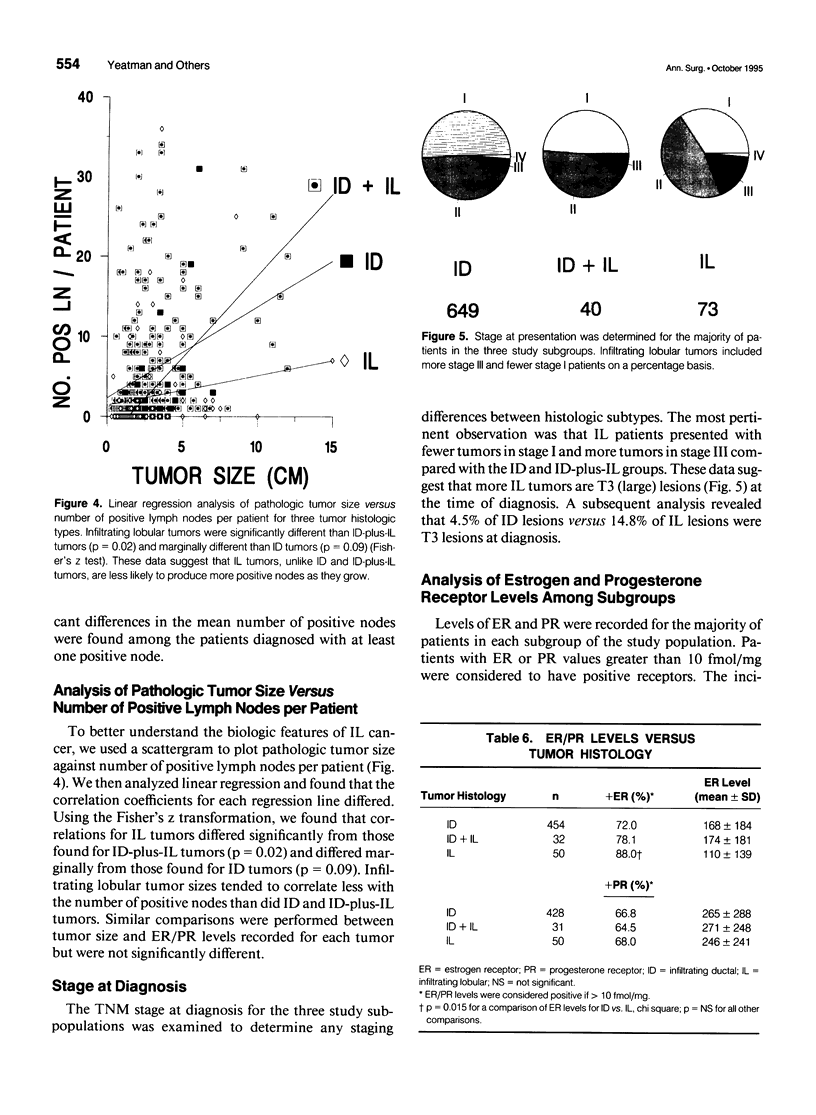
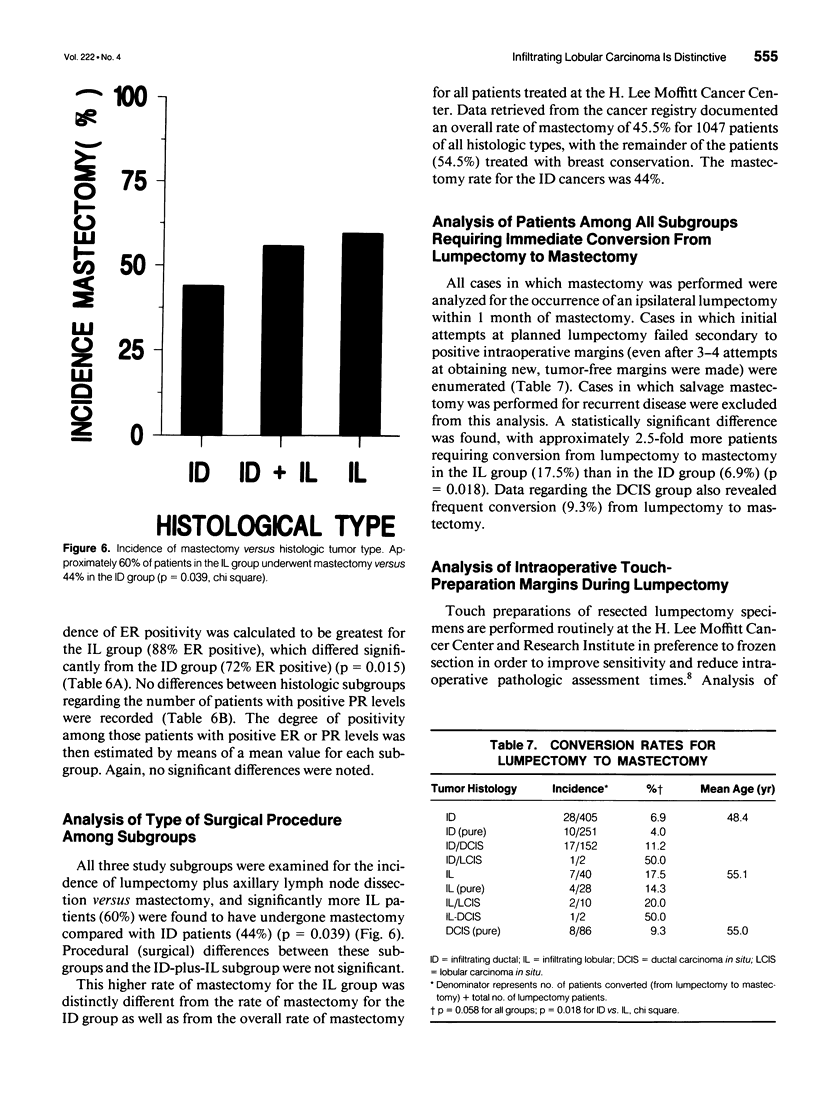
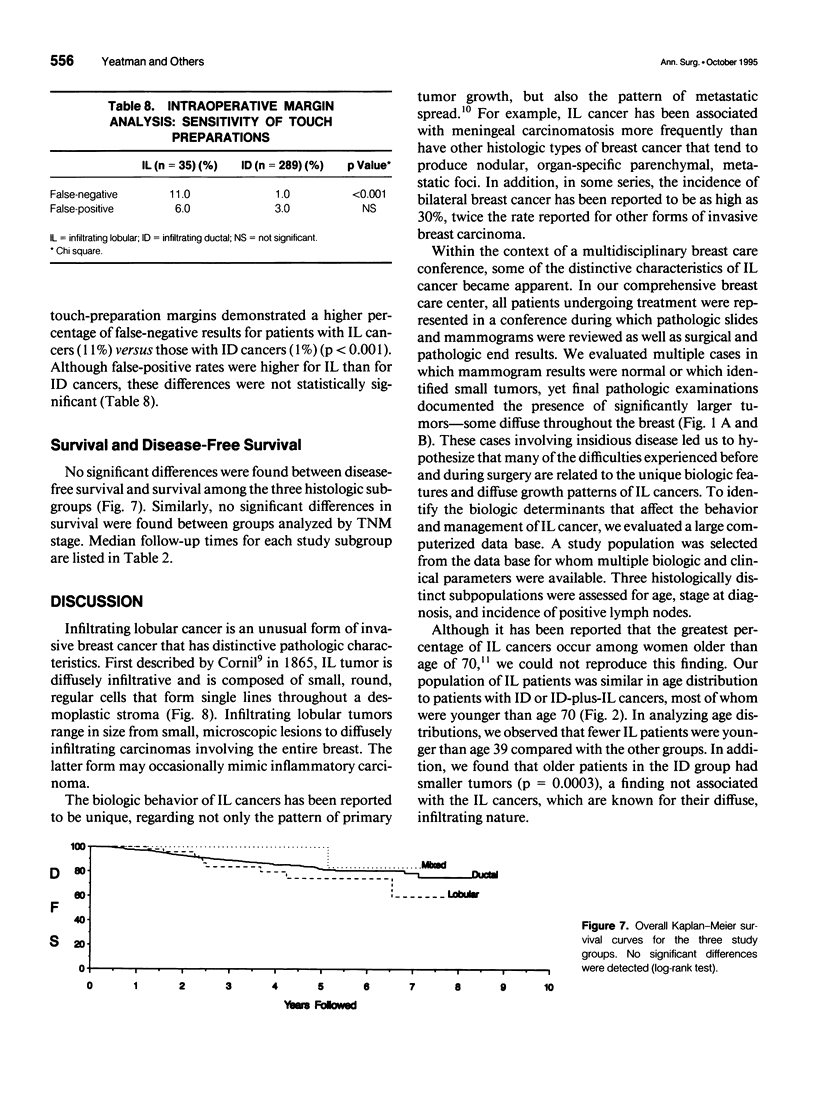
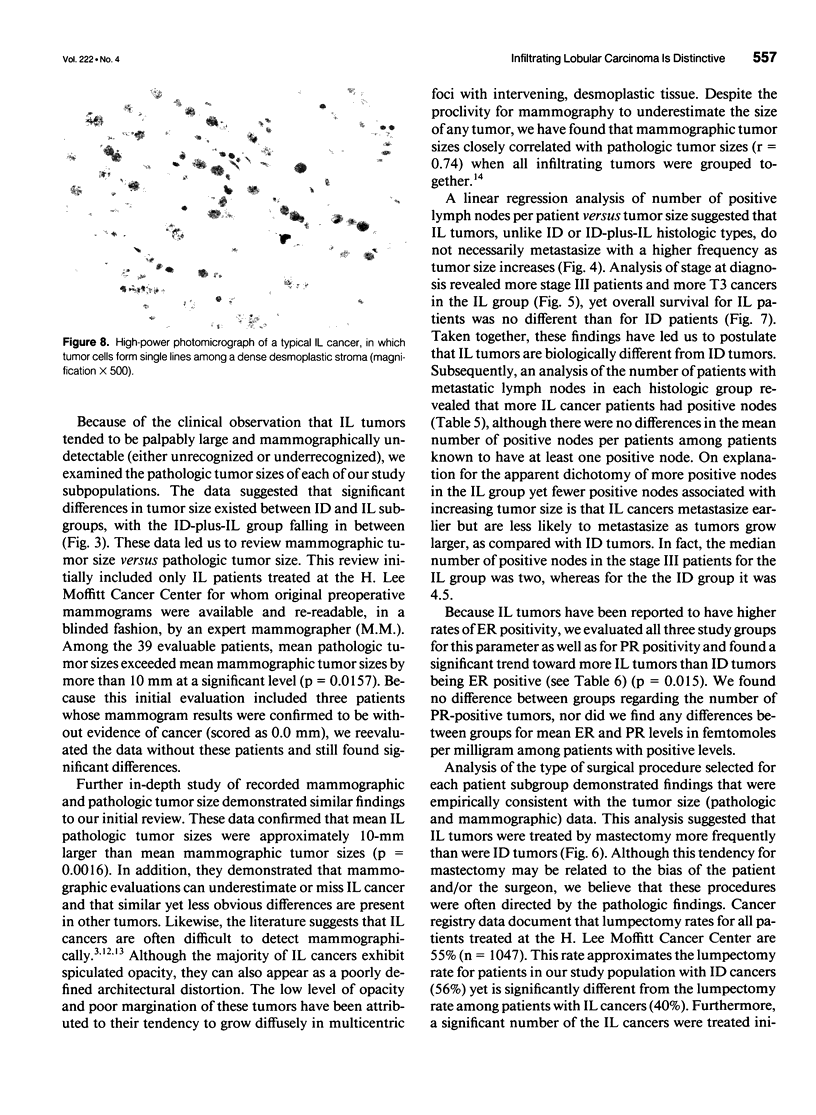
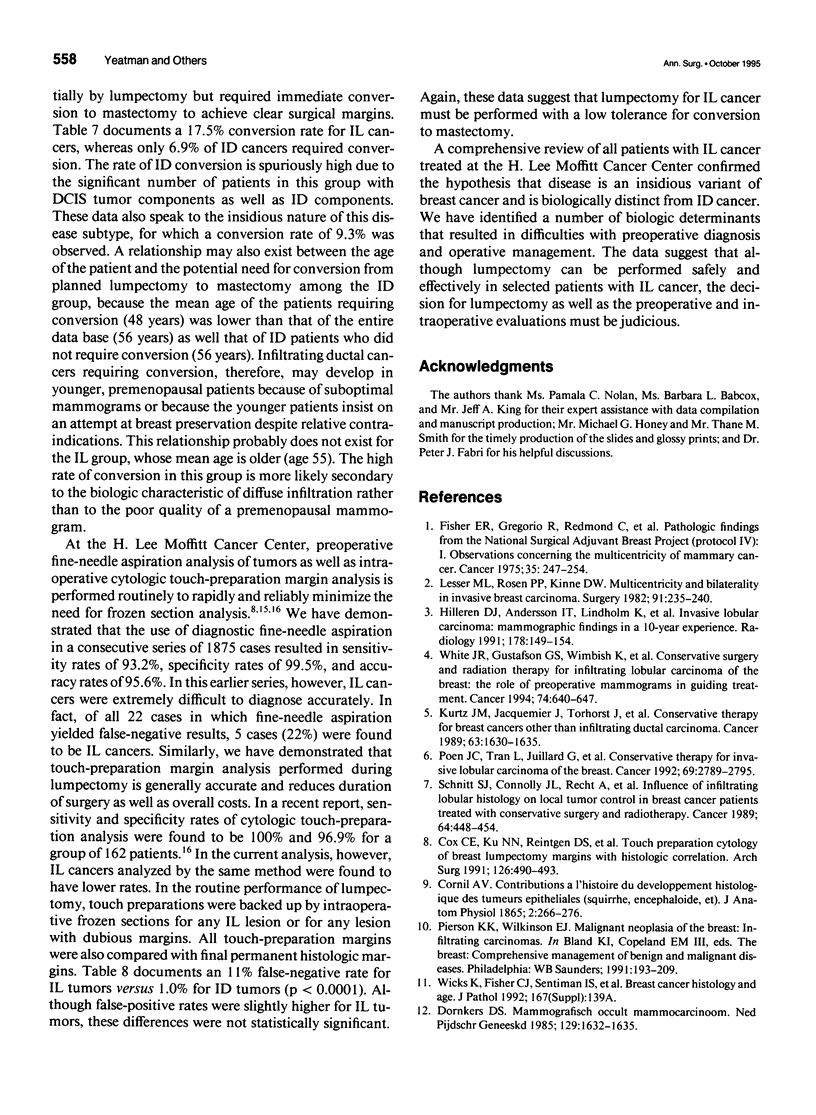
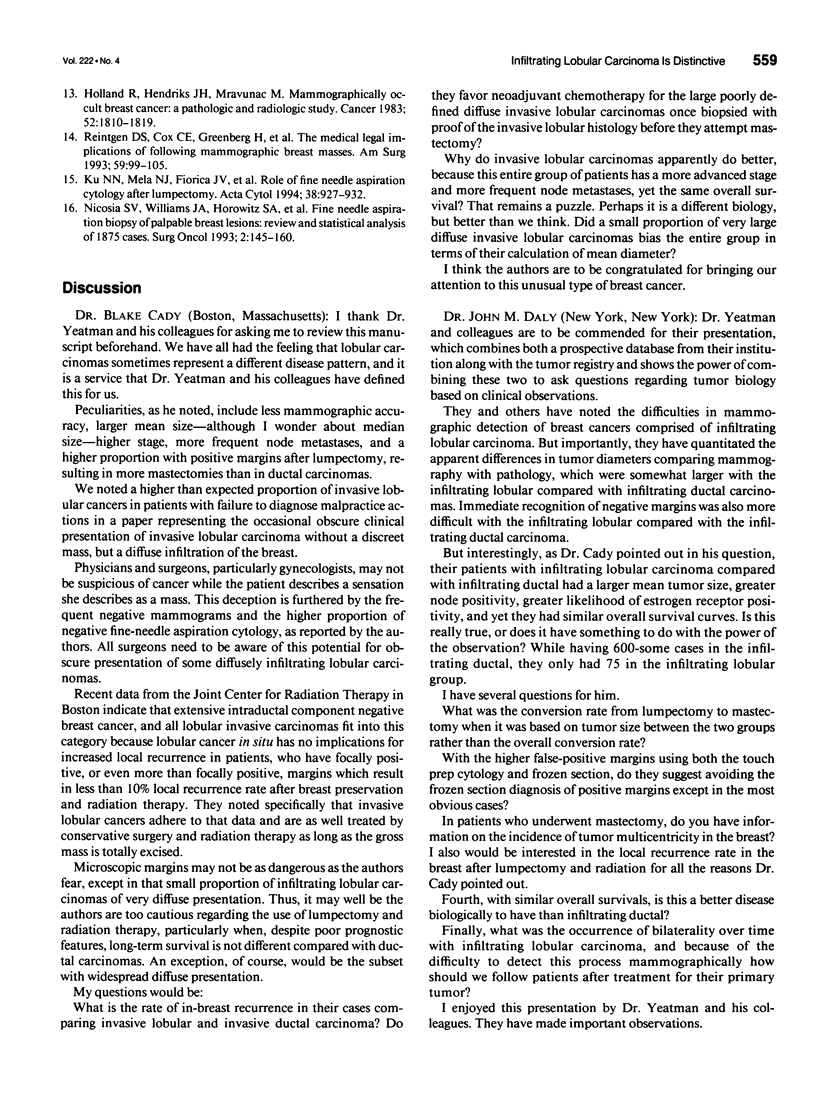
Images in this article
Selected References
These references are in PubMed. This may not be the complete list of references from this article.
- Cox C. E., Ku N. N., Reintgen D. S., Greenberg H. M., Nicosia S. V., Wangensteen S. Touch preparation cytology of breast lumpectomy margins with histologic correlation. Arch Surg. 1991 Apr;126(4):490–493. doi: 10.1001/archsurg.1991.01410280094014. [DOI] [PubMed] [Google Scholar]
- Fisher E. R., Gregorio R., Redmond C., Vellios F., Sommers S. C., Fisher B. Pathologic findings from the National Surgical Adjuvant Breast Project (protocol no. 4). I. Observations concerning the multicentricity of mammary cancer. Cancer. 1975 Jan;35(1):247–254. doi: 10.1002/1097-0142(197501)35:1<247::aid-cncr2820350130>3.0.co;2-s. [DOI] [PubMed] [Google Scholar]
- Hilleren D. J., Andersson I. T., Lindholm K., Linnell F. S. Invasive lobular carcinoma: mammographic findings in a 10-year experience. Radiology. 1991 Jan;178(1):149–154. doi: 10.1148/radiology.178.1.1984294. [DOI] [PubMed] [Google Scholar]
- Holland R., Hendriks J. H., Mravunac M. Mammographically occult breast cancer. A pathologic and radiologic study. Cancer. 1983 Nov 15;52(10):1810–1819. doi: 10.1002/1097-0142(19831115)52:10<1810::aid-cncr2820521009>3.0.co;2-f. [DOI] [PubMed] [Google Scholar]
- Ku N. N., Mela N. J., Fiorica J. V., Cox C. E., Reintgen D. S., Greenberg H. M., Clark R. A., Nicosia S. V. Role of fine needle aspiration cytology after lumpectomy. Acta Cytol. 1994 Nov-Dec;38(6):927–932. [PubMed] [Google Scholar]
- Kurtz J. M., Jacquemier J., Torhorst J., Spitalier J. M., Amalric R., Hünig R., Walther E., Harder F., Almendral A., Brandone H. Conservation therapy for breast cancers other than infiltrating ductal carcinoma. Cancer. 1989 Apr 15;63(8):1630–1635. doi: 10.1002/1097-0142(19890415)63:8<1630::aid-cncr2820630833>3.0.co;2-u. [DOI] [PubMed] [Google Scholar]
- Lesser M. L., Rosen P. P., Kinne D. W. Multicentricity and bilaterality in invasive breast carcinoma. Surgery. 1982 Feb;91(2):234–240. [PubMed] [Google Scholar]
- Nicosia S. V., Williams J. A., Horowitz S. A., Ku N. N., Shabaik A. S., Mela N., Reintgen D. S., Cox C. E. Fine needle aspiration biopsy of palpable breast lesions. Review and statistical analysis of 1875 cases. Surg Oncol. 1993;2(3):145–160. doi: 10.1016/0960-7404(93)90002-g. [DOI] [PubMed] [Google Scholar]
- Poen J. C., Tran L., Juillard G., Selch M. T., Giuliano A., Silverstein M., Fingerhut A., Lewinsky B., Parker R. G. Conservation therapy for invasive lobular carcinoma of the breast. Cancer. 1992 Jun 1;69(11):2789–2795. doi: 10.1002/1097-0142(19920601)69:11<2789::aid-cncr2820691126>3.0.co;2-j. [DOI] [PubMed] [Google Scholar]
- Reintgen D., Cox C., Greenberg H., Baekey P., Nicosia S., Berman C., Clark R., Lyman G. The medical legal implications of following mammographic breast masses. Am Surg. 1993 Feb;59(2):99–105. [PubMed] [Google Scholar]
- Schnitt S. J., Connolly J. L., Recht A., Silver B., Harris J. R. Influence of infiltrating lobular histology on local tumor control in breast cancer patients treated with conservative surgery and radiotherapy. Cancer. 1989 Jul 15;64(2):448–454. doi: 10.1002/1097-0142(19890715)64:2<448::aid-cncr2820640218>3.0.co;2-7. [DOI] [PubMed] [Google Scholar]
- White J. R., Gustafson G. S., Wimbish K., Ingold J. A., Lucas R. J., Levine A. J., Matter R. A., Martinez A., Vicini F. A. Conservative surgery and radiation therapy for infiltrating lobular carcinoma of the breast. The role of preoperative mammograms in guiding treatment. Cancer. 1994 Jul 15;74(2):640–647. doi: 10.1002/1097-0142(19940715)74:2<640::aid-cncr2820740216>3.0.co;2-v. [DOI] [PubMed] [Google Scholar]



